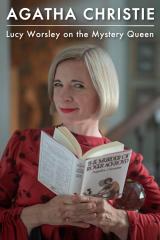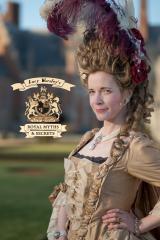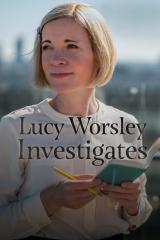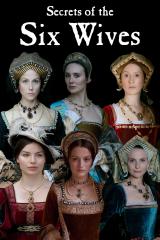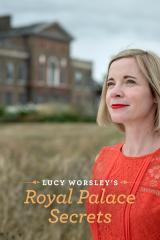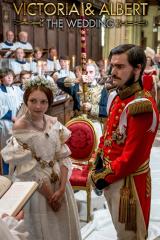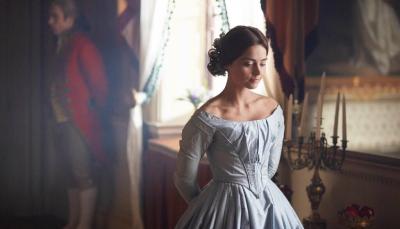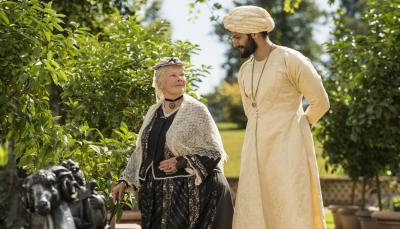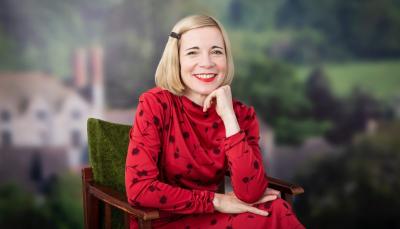Lucy Worsley's Best Series: Just a Historian Who Wandered into TV
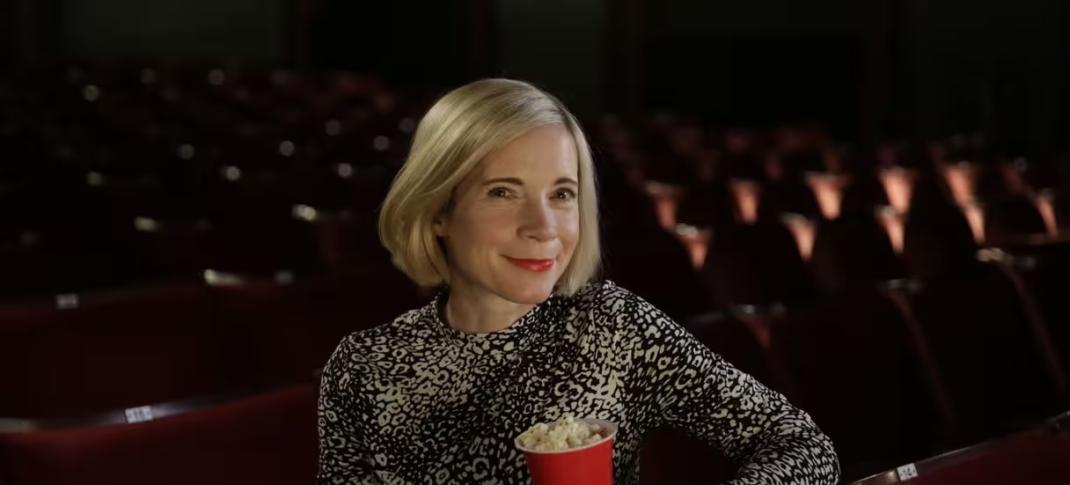
Lucy Worsley.
PBS © Mike Robinson
Popular historian Lucy Worsley’s first TV appearance was in 2009 for the documentary Inside the Body of Henry VIII, joining a medical doctor and a biographer in a special that examined the king’s physical condition on the 500th anniversary of his ascension to the throne. Worsley commented that the highlight of the show was squashing a pig to reconstruct Henry’s jousting accident in 1536.
Since then, she’s gone from strength to strength, charming, challenging, and amusing audiences worldwide. Her enthusiasm extends to dressing up and joining the action, whispering an erudite and witty commentary from beneath a mobcap or helmet as the scene plays out. But don’t be fooled. She is a serious historian whose knowledge is breathtakingly vast, and if it takes a daft costume to catch her audience’s attention, she’ll lace herself into one. She has created programs on the Romanovs, the histories of opera and dance, Mozart’s London debut, the development of Tudor choral music, horse ballet or “manage” (the topic of her doctoral thesis), the Women’s Institute, romance through the ages, food history, antiques, the Regency, and the King James Bible.
Worsley has also written several books, including some for young adults. Her day job is as Chief Curator of Historic Royal Palaces, caring for six unoccupied royal palaces in the UK: The Tower of London, Hampton Court Palace, Kensington Palace (State Apartments and Orangery), The Banqueting House, Whitehall, Kew Palace with Queen Charlotte’s Cottage, and Hillsborough Castle, Northern Ireland.
Let’s take a look at some of her work!
'Jane Austen: Behind Closed Doors'
In this loving tribute to Jane Austen and the houses she knew, Jane Austen: Behind Closed Doors, Worsley traces the novelist’s life and career to discover just how much they shaped her life and novels. Worsley visits properties that still exist, from grand stately homes to holiday rentals in Bath and Lyme Regis and, poignantly, the house in which she died in Winchester. Her brother Henry’s bachelor pad in London has been rebuilt (the garden is still intact), and a pub has been built on the site of her brother Frank’s house in Southampton, at both of which Austen stayed for a time.
Worsley reveals new findings when she visits the excavation site of Austen’s birthplace, in Steventon, Hampshire, just a few miles from the famous house/museum in Chawton where Jane, her mother, and her sister settled in 1809. Actor Gwendolen Chatfield represents Austen, complete with a rural Hampshire accent. Read the companion book, Jane Austen at Home: A Biography.
Jane Austen: Behind Closed Doors is available to stream on Roku.
'Agatha Christie: Lucy Worsley on the Mystery Queen'
Lucy Worsley explores the legacy and enigma of author Agatha Christie in Agatha Christie: Lucy Worsley on the Mystery Queen, whose life and work reflect the upheavals of the 20th century. Christie is the most successful novelist of all time, outsold only by William Shakespeare and the Bible. Her 75 novels and numerous plays and short stories defined the classic literary mystery of the 20th century. But who was Christie? Was her mysterious disappearance, when she left her unfaithful first husband, an attempt to frame him for murder?
Although Christie maintains the persona of an ordinary housewife, Worsley doesn’t believe her for a moment. As a historian, she examines how Christie’s life and times were reflected in her books, revealing the woman beneath the writerly facade and the tumultuous changes during her lifetime in society, politics, science, and technology. Also, check out the companion book, Agatha Christie, an Elusive Woman.
'A Very British Murder with Lucy Worlsey'
In A Very British Murder with Lucy Worsley, the historian asks the logical follow-up question. If Agatha Christie and her contemporaries transformed the murder mystery into what Worsley defines as “an elegant kind of crossword puzzle,” what came before, and why has the public been so fascinated by this grisly subject for over two centuries? What does this fascination with murder tell us about ourselves?
Worsley dates the obsession to the early nineteenth century, with its efficient printing technology and growing literacy across society. Newspapers ran sensational and bloodthirsty illustrated stories of murders. Even Charles Dickens, and certainly not Arthur Conan Doyle, were not immune from the delights of a good, bloody murder. Check out the companion book, A Very British Murder: The Curious Story of How Crime Was Turned into Art.
A Very British Murder is available on BritBox.
'Lucy Worsley's Royal Myths & Secrets'
Do we really know the true stories behind Europe’s royal families, obscured by time, myth, and outright propaganda? In Lucy Worsley’s Royal Myths & Secrets, Worsley sets out to uncover what we think we know versus what might be true. Elizabeth I, identified for centuries as Britain’s warrior queen and “good Queen Bess;” Queen Anne, whose significant legacy and image were destroyed by salacious court gossip; and Marie Antoinette, reviled as the single cause of the French Revolution, didn’t say “let them eat cake” but ended up on the guillotine anyway.
The English Reformation is analyzed not as a matter of Henry VIII’s succession (and roving eye) but as a deliberate challenge to the political players of Europe. Worsley shows us the turbulence of the late Georgian period when George III’s mental illness led to a nine-year Regency that threatened the survival of British royalty. A world war raged, and radicalism and revolution were on the rise. Finally, Worsley looks at the Romanov family and the Russian Revolution.
'Lucy Worsley's 12 Days of Tudor Christmas'
Lucy Worsley’s 12 Days of Tudor Christmas dives into the history of British food and the lavish Christmas celebrations of Henry VIII’s court. These were rooted in charity and religion and preceded by fasting during Advent. After that, the court celebrated with twelve days of eating, drinking, and entertainment under the Lord of Misrule, and we still can trace many of our own holiday traditions back to this period – carols, turkey, gift-giving, mistletoe, and mulled wine.
Worsley helps food historian Annie Gray prepare two royal feasts in the kitchens of Hampton Court Palace and dresses as Henry himself for the King’s Christmas dinner, featuring a stuffed boar’s head. She also examines how ordinary people celebrated, which included games and sports forbidden at other times of the year, feasting and enjoying ale and mead. Worsley shares her research in the British National Archives, revealing exactly how much Henry VIII spent on his lavish Christmas celebrations, food, and entertainment, and the value of the lavish gifts he received from his courtiers. But even the gift of a king-sized boar spear in 1532 couldn’t save Anne Boleyn.
Lucy Worsley’s Twelve Days of Tudor Christmas is available on the PBS Living Prime Video Channel.
'Lucy Worsley Investigates'
The four-part show Lucy Worsley Investigates casts new light on some of England’s most troubling and grim history. Lucy examines what could have happened to the two Princes in the Tower, the heir to the throne and his brother, who disappeared in 1483, leaving the throne clear for their uncle Richard III. Two and a half centuries later, King George’s mental illness caused a constitutional crisis and changed the treatment of mental illness in England. The Black Death was a devastating blow to the country, impacting religious beliefs, class structure, work, and the status of women. Finally, a re-examination of the Witch Hunts, where Lucy shows us the details of one alleged witch, whose death led to the state-sanctioned killings of thousands of women.
No dressing up in this one; Lucy sticks to a serious black and white outfit.
'Suffragettes'
Created to commemorate the 100 years since women were given the right to vote, the documentary Suffragettes won the BAFTA Specialist Factual award. (Worsley wore a suffragette sash for the occasion). The documentary won critical acclaim, even from viewers who dislike her penchant for dressing up. This time, it works. In a departure from the productions based on royalty, which we associate with Worsley, Suffragettes features the ordinary members of the WSPU (Women’s Social and Political Union), working-class women, millworkers, and housewives. Neither does it flinch from the physical hardship and violence that characterized the actions of the movement and their treatment in prison; the women, Worsley points out, used the tools of a terrorist organization, concentrated and unexpected violent acts.
The Observer commented: “Absent were the comfy stereotypes of feisty, flinty heroines chaining themselves stoically to gates, passively leafletting. Instead, we saw the all-out violence – the bombs, the arson, the fear, the terrorism – deemed necessary; and saw, too, the viciousness of force-feeding. Worsley, of course, got to dress up, but very differently; seeing her run from a fire attack, as part of the cast of a kind of living diorama, had a fresh vividness that somehow just worked.”
Suffragettes is available on BritBox.
'Secrets of the Six Wives'
We all know the shorthand for the wives of Henry VIII: Divorced (Catherine of Aragon); Beheaded (Anne Boleyn); Died (Jane Seymour); Divorced (Anne of Cleves); Beheaded (Catherine Howard); Survived (Katherine Parr). Worsley approaches history with her usual wit and precision, cutting through the myths and sentimentality and presenting the six women as players in the Tudor period’s political and religious developments.
The Tudor court’s struggles, alliances, and intrigues are revealed in dramatized scenes, interviews with historians and other experts, and visits to the locations where key events occurred. The show also sheds light on the workings of the Tudor court, exploring the power struggles, alliances, and intrigues behind the scenes.
'Lucy Worsley's Royal Palace Secrets'
In 2020, Britain and much of the world were under lockdown and the royal palaces that would generally attract millions of visitors were closed. This gave Lucy Worsley an extraordinary opportunity to show us treasures and hidden nooks in the Tower of London, Hampton Court, and Kensington Palace and the resulting special, Lucy Worsley’s Royal Palace Secrets.
In this rare look behind the walls, Worsley shares the stories of some of the palace’s most famous inhabitants and the building’s thousand-year evolution from fortress to pleasure palace or official royal residence to family home. She shows us the dress Princess Diana wore when she danced with John Travolta at the White House, the room where Jane Seymour gave birth and died, and other spots normally closed to the public.
'If Walls Could Talk: An Intimate History of the Home'
Stepping away from royalty to the common folk, Lucy Worsley explores the everyday in If Walls Could Talk: An Intimate History of the Home. Joined by historian Amanda Vickery, food and tea historians, vintage clothing experts, a plumber, and historical interpreters, Worsley explores the English home through an examination of the four most vital rooms of the house – the bedroom, the bathroom (brought inside the house only within the last century), the kitchen, and what has evolved into a communal/entertainment space (from the medieval great hall to the lounge via the drawing room).
Concepts of privacy have changed throughout the centuries, changing behavior and customs; we don’t normally entertain in the bedroom, and neither do we invite people in to watch us dress, as royalty once did, although Worsley, as game as ever, demonstrates. She shows us the profound changes that running water, electricity, and gas brought to everyday life and the emergence of household gadgets and technology that transformed the kitchen from the most dangerous and dirty room to the heart of the home. Read the companion book If Walls Could Talk.
If Walls Could Talk: An Intimate History of the Home is available on BBC Select.
'Victoria & Albert: The Wedding'
This two-part reconstruction of the lavish 1840 wedding of Victoria and Albert is hosted by Lucy and with assistance from historians Jasdeep Singh and A. N. Wilson, using sources such as history books, archives, newspapers, and Victoria's diaries for the details –– dress, food, and music are expertly recreated. We’re shown details of the couple’s courtship and engagement, and the political background of the alliance. This is the wedding that revolutionized weddings ceremonies from discreet drawing-room ceremonies to the all-out extravaganza with the big white dress, the big white cake, and a clutch of bridesmaids. It was a great PR move, since Victoria was not too popular as a monarch, but the glamorous wedding and its equally efficient media coverage endeared her and her new husband to the public. According to Lucy, it’s the wedding that saved the Crown.
'Lucy Worsley's Royal Photo Album'
Unsurprisingly, Lucy Worsley's Royal Photo Album begins by tracing the story of royal photography to the time of Queen Victoria and Prince Albert. Their interest in the latest technology naturally drew them to the emerging art form; Albert was a founder of the Royal Photographic Society and helped secure photography’s reputation as such. Even then, it was a form of propaganda, with photographic cards distributed across the Empire, showing the Royal Family as an idealized symbol of propriety and domestic bliss.
Generations of royals continued to collaborate with photographers, bringing ceremony and their preferred images into everyday homes. Photographers like Cecil Beaton and Anthony Armstrong-Jones captured the magic and glamour of royalty in the twentieth century, with the Crown definitely in control. However, the relationship between the royal family and photographers soured as tabloids and enhanced technology became intrusive, if not outright dangerous.

